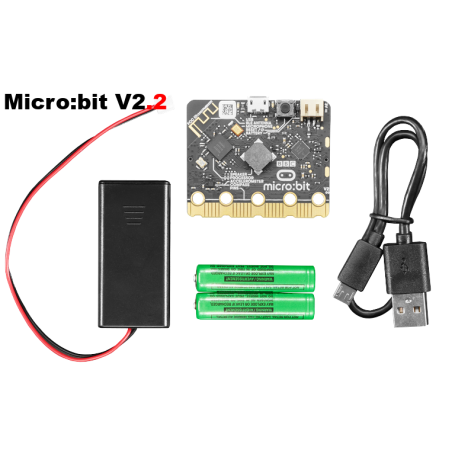Micro:bit v2.2 - Starter Kit
Micro:bit V2 - Starter kit
- 1x Micro:bit V2.2
- 1x USB cable
- 1x Battery bloc
- 2x AAA batteries
Payments are secured by LyraCollect, a French payment collection company.
It is possible to delivered to your home, to a pick-up point or picked up by appointment at MCHobby
We prepare, pack and ship your orders with great respect and care.
Micro:bit V2.2, learning plateform for young engineer
The BBC Micro:bit V2.2 is an upgrade of the standard Micro:bit standard awith a more powerful processor, still tons of features, sensors and additionnal speaker + microphone.
The Micro:bit V2.2 will not replace the Micro:bit V1 but will instead be the big brother in the Micro:bit family. As espected, it is more expensive but for good raisons. The standard Micro:bit is still a very valuable plateform and a relevant budget choice!
Micro:bit and Micro:bit V2.2 are STEM's learning plateform for our kids (from 8~10 year depending on the support you can provides). Micro:bit are also suited for individuals desiring to learn or improve their experiement skills. Programming is more easy than ever!
The Micro:bit product line contains lot of devices, affordables and feature rich. The programming environment is think for novice. As Micro:bit V2.2 is retro-compatible with the original Micro:bit, the learning, cursus, MakeCode code bloc softwares and MicroPython code will work exactly the same on both the Micro:bit original and Micro:bit v2.2.
The version 2 just add new features bringing AI (Artificial Intelligence) and ML (Machine Learning) features, new programming item that should be made available in 2021.
This starter kit ,also named "Micro:bit V2 Go Bundle", contains a Micro:bit V2.2, batteries, battery holder and micro USB cable. It is possible to create an incredible amount of project and learn a lot with this small board. The online development environment MakeCode is bery intuitive and plaisant to use.
The Micro:bit v2.2 board
Based on a ARM processor, the Micro:bit V2 does fit several sensors as well as a Bluetooth LE connectivity. The board can communicates together, which offers a large variety of interaction with the board.
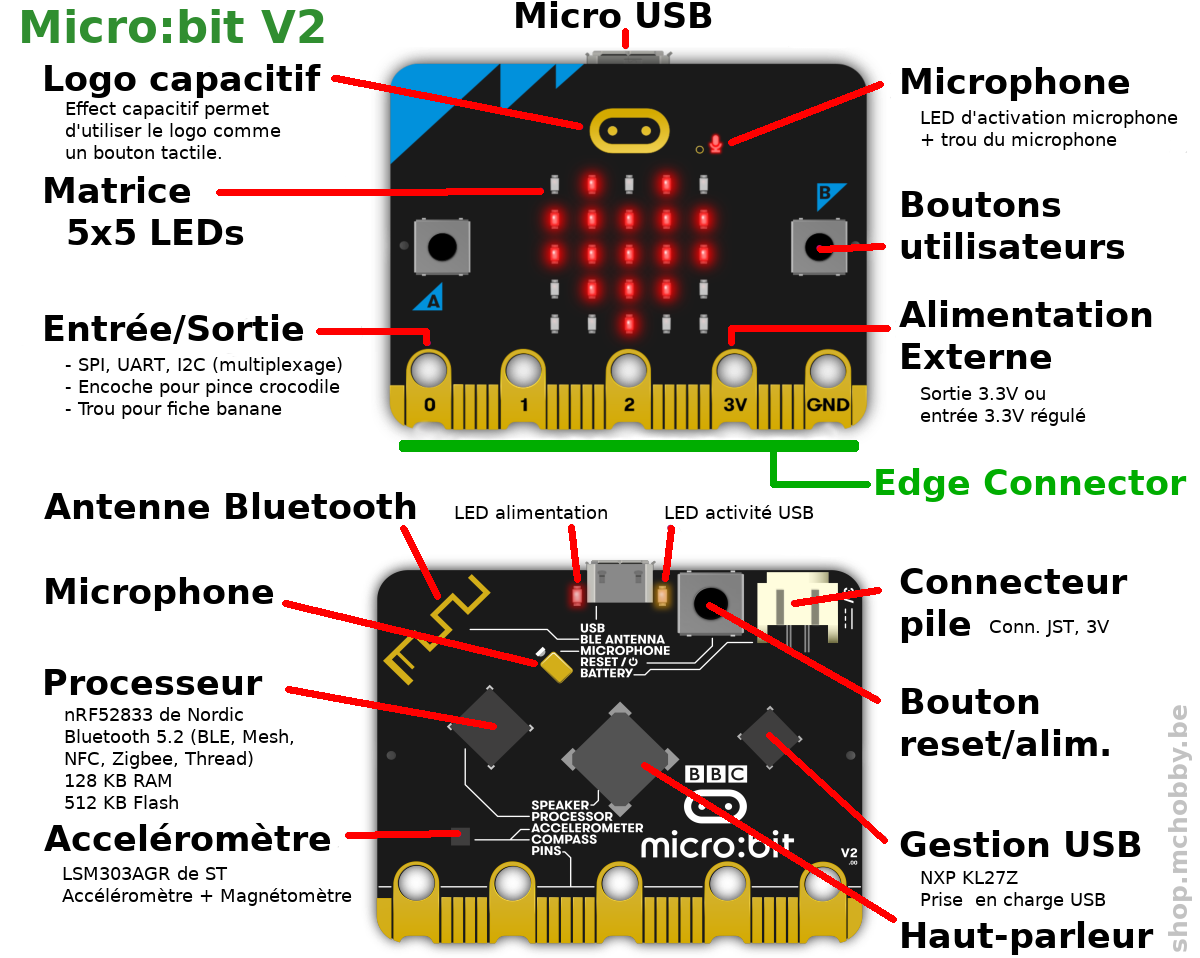
As it, the Micro:bit V2.2 can already be used to make many environmental measurement, also the temperature (on the MicroControleur). It is perfect learning plateform for young makers and young scientist.
What's up:
- A nRF52833 processor with more of RAM and Flash. This is more comfortable to work with MicroPython.
- A MEMs microphone, to listen to the world around the board.
- A speaker to make noise
- A capacitive sensor (on the logo)print qui peut agit comme un bouton.
- A sleep mode activated with a double click on the Reset button.
Micro:bit does have a LED matrix used as display, buttons, Bluetooth LE, digital compas, accelerometer and movement detector. Such sensors offers so many possibilities.
See the hardware page for more information about the conformity (MicroBit.org).
Programming
"Programming" is not comfortable for a newcomer. The Micro:bit development environment will help you to quickly start in an easy way.
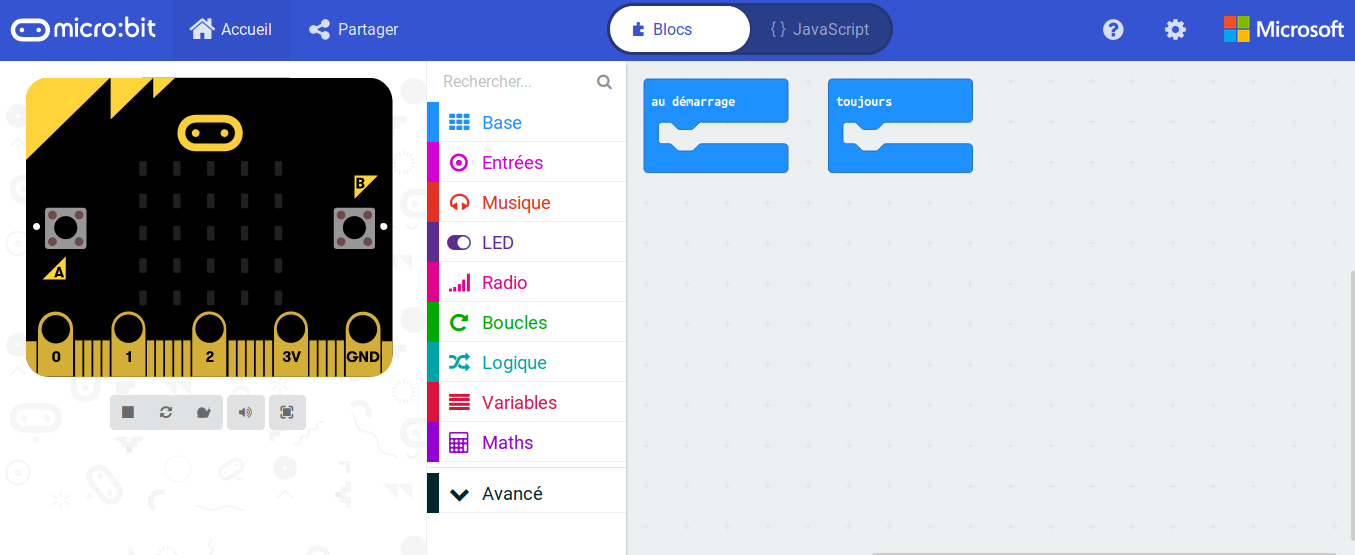
With features grouped togheter (each one with a different color), create an App showing a beating art is as simple as:
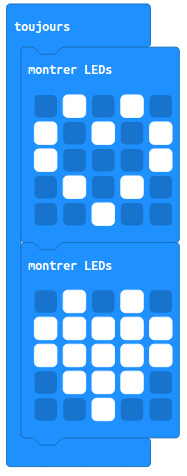
Or you can use this App to show up your mood :
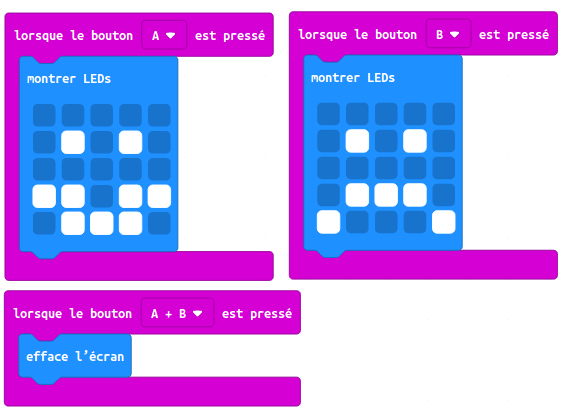
Micro:bit is compatible with several programming langage:
- MakeCode, is a super simple code bloc editor running from your favorite internet browser or mobile app.
- MicroPython, the python programming langage for microcontroler. Great for user wanting to discover programming world. The MicroPython documentation for Micro:bit is really great.
- Mu Editor is a computer Text editor to facilitate programming the Micro:Bit from PC.
Easy experiments
The Micro:bit connector offers P0, P1 & P2 connexions which are wider. You can quickly connect a banana plug or alligator clip. This makes interaction and experimention with the world fast and easy.
A switch can be made with 2 alligator clips:
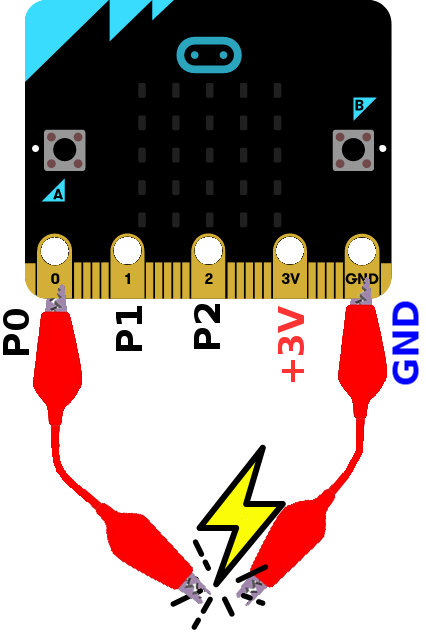
Please note: as the Micro:Bit can detect weak current.... you can also use your finger on the pad to active it as a switch :-)
Edge Connector
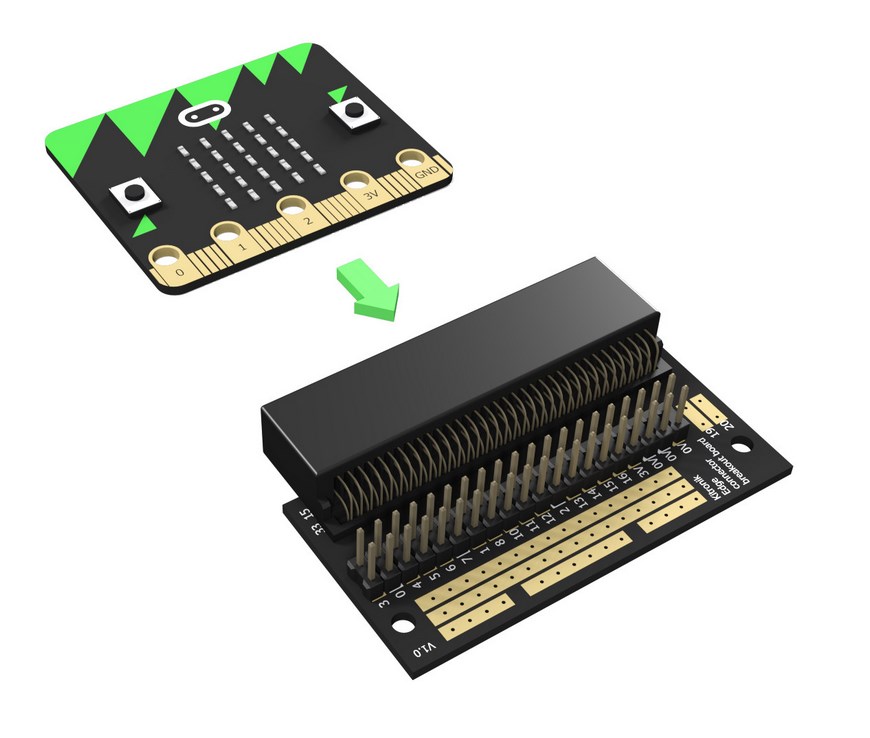
The P0, P1 & P2 connector are quite useful... having more connexion would be even better.
The thin layers between the P0, P1 & P2 PADs are also connexion poins.
Thanks to the 20 pin connector and the Edge Breakout Connector, the Micro:bit can also be connected to other devices like Raspberry-Pi or Micro:bit extension board, sensors (temperature, pressure, ...) or your own prototypes.
Check the product description for the Micro:bit :Move or Micro:bit Inventor Kit to learn more details about the possibilities of the Edge connector.
Content
For each ordern you will receive the following.
- Micro:bit V2.2
- USB cable (to connect it on a computer)
- A battery holder
- 2 x AAA batteries
Tutorials
- The various article on Micro:bit published on our blog (blog.mchobby.be, French)
Our friend's blog ArduiBlog (Jean-Christophe Quetin, French) - Micro:bit connector (Pdf, MCHobby, French)
Detailled version (MicroBit.org, english) - The Micro:bit website
- Micro:Bit introduction (youtube, video)
- Programming the Micro:Bit with MicroPython (MicroBit.org, French)
- Programming Micro:Bit with Arduino IDE (MCHobby blog, French)
- Plug and audio amplifier on the PWM output (MCHobby blog, French)

